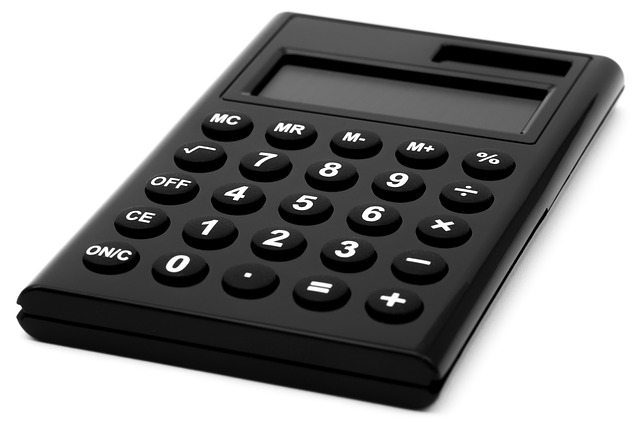
A dietitian’s take on energy in/energy out – understanding how much you need and where you get it
My Health Career is pleased to present a guest blog post from dietitian Sally Marchini, who has her own business Marchini Nutrition. Sally has Type 1 diabetes, and is a regular contributor to the blog on Diabetes Counselling Online. The following article was originally published on the Diabetes Counselling Online blog, and provides great insight as to why dietitians are often seen crunching numbers!
“You may not know that I was a mature-age student when I studied to become a dietitian. As a result I had already lived most of my life with diabetes before being fortunate enough to become an Accredited Practising Dietitian after 4 years full time study at the University of Newcastle. One of the light-bulb moments I had in my studies was that about understanding macronutrient energy values and estimated energy values.
I knew that in order to maintain my weight for wellness, energy in had to equal energy out, but I didn’t know that I could work out how much energy my body needed just to exist (my basal metabolic rate) and why I was putting on weight even when I tried cutting my carbs (such a bad idea!). So I thought I’d share a little of this with you in the hope that it also creates a light-bulb moment for you :)
Remember that the first of the five Australian Dietary Guidelines is ‘To achieve and maintain a healthy weight, be physically active and choose amounts of nutritious food and drinks to meet your energy needs’.
‘To meet your energy needs’
One of my textbooks (Food & Nutrition, edited by Mark L. Wahlqvist) explains, “Living organisms require energy to maintain life. Energy is obtained by oxidation of fuels which include carbohydrates, fats, proteins and alcohol.” The National Medical Health and Research Council (NHMRC) further explains that, “Energy is not a nutrient but is required in the body for metabolic processes, physiological functions, muscular activity, heat production, growth and synthesis of new tissues”.
In today’s blog I’ll share with you links to a mathematical formula that is popularly used to work out how much energy you need to satisfy your basal metabolic rate, and then explain about how those fuels (otherwise known as macronutrients) contribute towards making up the numbers.
Please bear in mind that each of us is different, so these numbers are estimates only that have many possible reasons for inaccuracies. It’s also important to understand that energy requirements for individuals vary with age, gender, body size and activity, so different recommendations are needed for each age and gender group.
There are a variety of formulas available to work out how much energy we need, but the one I prefer to use is called the Schofield Equation. As with all such equations, the number is provides is only an estimate so should only be used as a rough guide. It estimates the metabolic rate in mJ/day (so we need to multiply the final number by 1000 to get kJ/day, and divide that by 4.2 to get calories/day).
Rather than providing the various options for the formulas here, it’s easier to use a link to the NHMRC BMR calculator where you can enter your age and gender to find your BMR. Then all you do is to nominate your Physical Activity Level (PAL) to work out what your approximate energy needs in mJ/day for your approximate weight and height. I generally choose a lower PAL number as most of us don’t do much more than the minimum of 30 minutes per day of physical exercise, so I choose a PAL level of 1.4 (for maintenance) for this purpose.
That makes the number that I’m aiming for as a 48 year old female about 70kg with a 1.4 PAL = 8.3 mJ (8300kJ/1980calories) to maintain my current weight. What number have you worked out for yourself?
The macronutrient energy values that make up your numbers
Remembering that “energy is obtained by oxidation of fuels which include carbohydrates, fats, proteins and alcohol” – each of these has been tested to see how much energy they release.
One of my favourite points that I constantly remind clients of is that, regardless of the numbers, it’s important to recognise that carbohydrates and proteins have similar energy per gram values (16 & 17 kJ/gram respectively) which are at least half as much as alcohol and fats (27 & 37 kJ/gram respectively).
Again we need to remember that each of us is different, but there are what are called Acceptable Macronutrient Energy Ranges (AMDRs) that are generally referred to as a guideline for how much of each we should include within our allotted energy needs which would allow for an adequate intake of all the other nutrients whilst maximising our general health outcome. Each person needs to understand with the help of a health professional (dietitian) which is suitable for them as we all have different requirements. You can read more detail on this topic via the NHMRC website.
For us with diabetes, carbohydrates are always open for discussion and here it’s interesting to note that the American Diabetes Association recommends a minimum amount of 130g per day (about 9 x 15g serves spread across the day) of quality carbohydrates for our brains and bodies to perform optimally.
Speaking of quality, of course we need to always bear in mind the importance of the quality of the foods we eat from each of the macronutrient areas:
- Carbohydrates should be nutritious with a low-glycemic index wherever possible. As mentioned at the start, you need quality carbohydrates for many reasons. Read more here.
- Proteins should be lean (to avoid saturated fats) or be plant based.
- Fats should be mostly mono- and poly-unsaturated with less than 10% of your fat intake being from saturated fats. It’s important to maintain a 1:1:1 ration with Mono-unsaturated fats, Poly-unsaturated fats and Saturated fats.
- Alcohol is not considered nutritionally important so should only be consumed in moderation as per the guidelines of 1 standard drink for females per day, and 2 for males, with a day or two alcohol free days per week. If you don’t drink, there’s no need to start!
If you feel that you’d like to learn more about these topics and how they apply to you, you can apply for counselling (free to all Australians with diabetes, with a small fee for internationals) through Diabetes Counselling Online, or you can find a dietitian near you via the Dietitian’s Association of Australia or similar organisation in other countries.
Hoping that’s been enlightening for you as it was for me in my early days of university :)
 Sally is the Social Media Dietitian with Diabetes Counselling Online, owner of her private practice (Marchini Nutrition), and has had type 1 diabetes for close to 40 years and coeliac disease for many years too.”
Sally is the Social Media Dietitian with Diabetes Counselling Online, owner of her private practice (Marchini Nutrition), and has had type 1 diabetes for close to 40 years and coeliac disease for many years too.”
